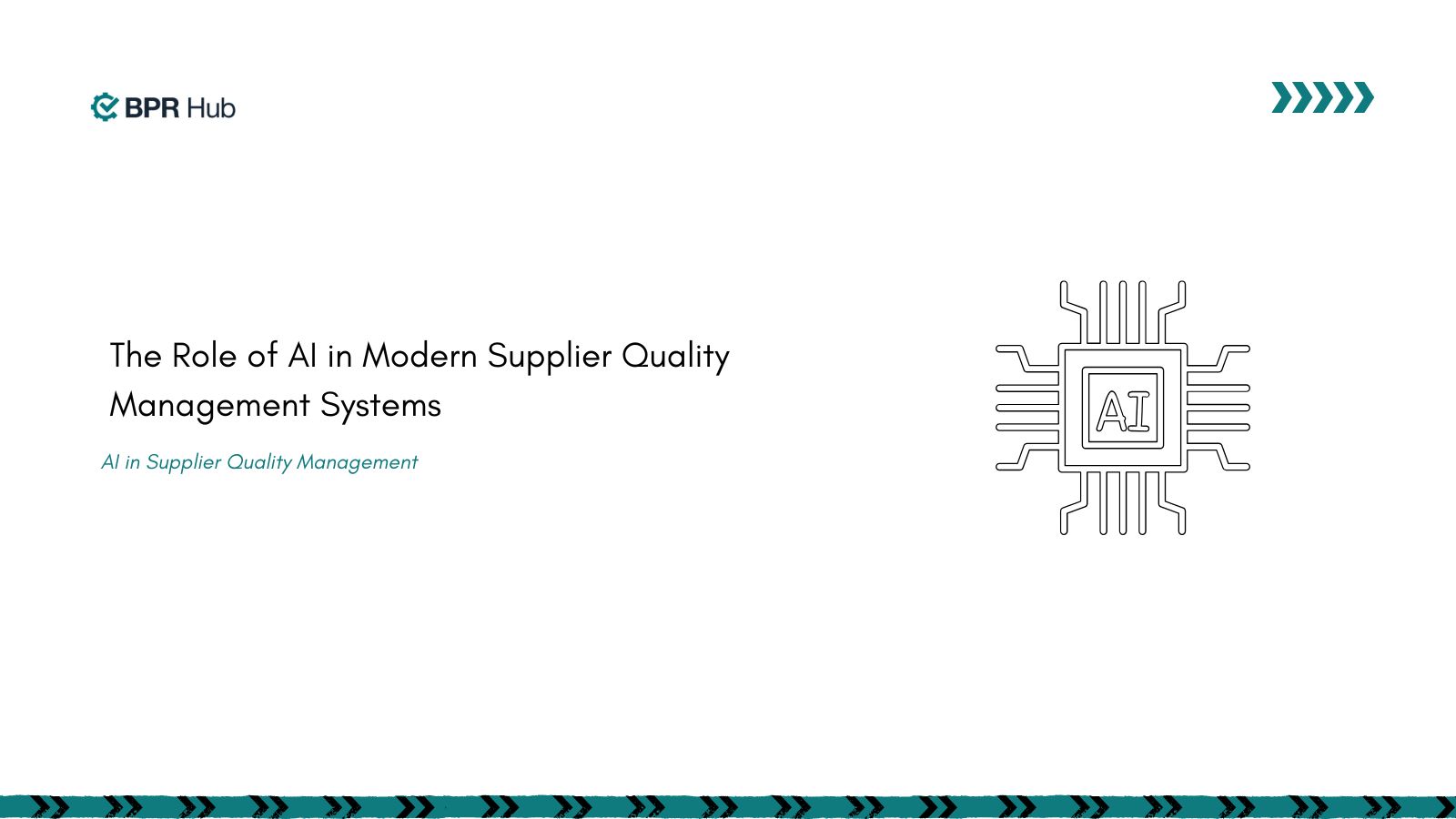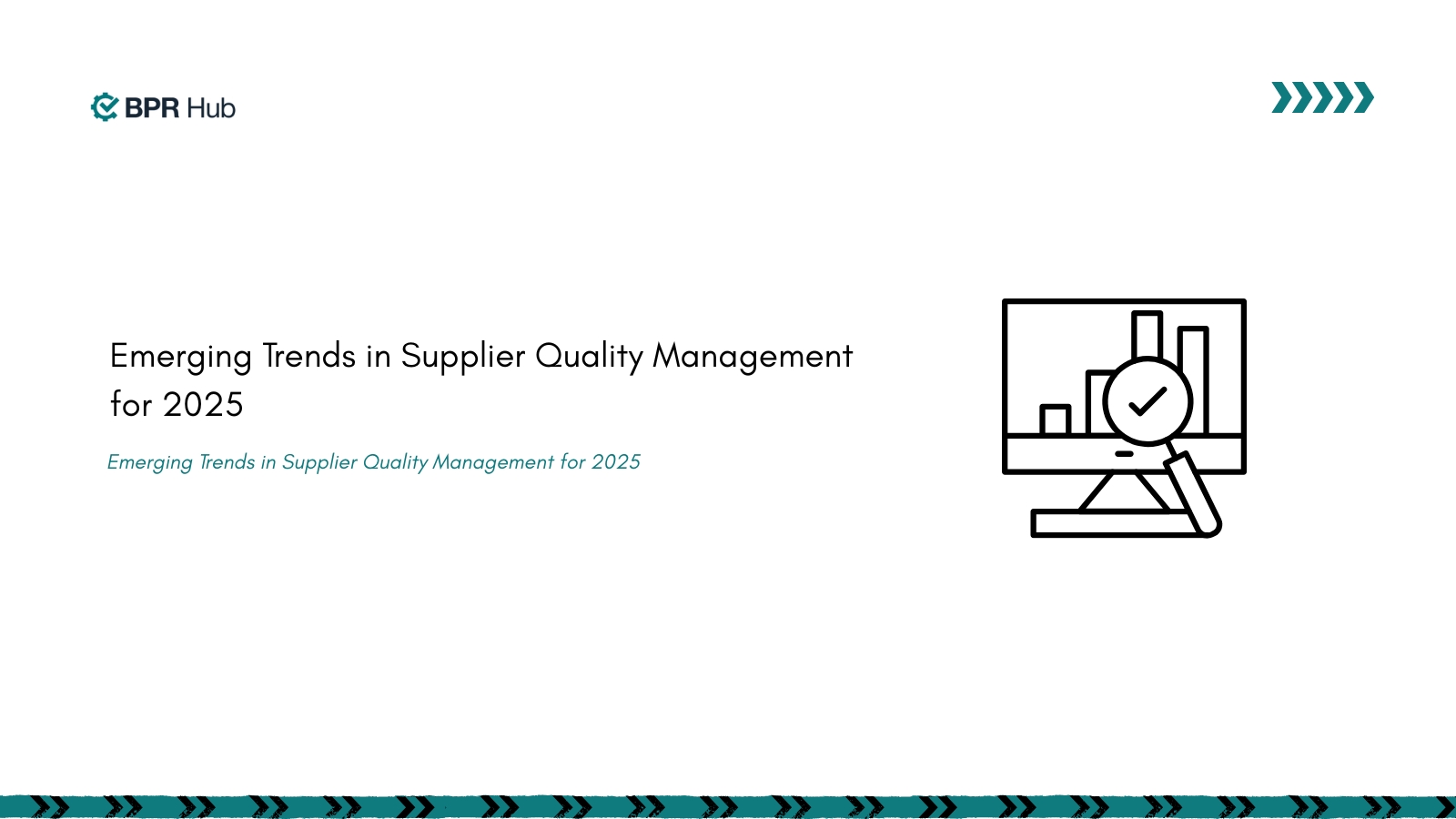Over 300,000 organizations worldwide are ISO 14001 certified, showcasing its widespread recognition and impact. Premier Foods, for instance, achieved a 'zero landfill' status by recycling and reusing 100% of its site waste.
This globally recognized standard, supported by the ISO 14001 checklist for small businesses, goes beyond reducing environmental impact—it provides a structured way to simplify operations, cut costs, and build trust with stakeholders.
ISO 14001 offers a comprehensive framework to establish an environmental management system (EMS) tailored to your small business’s specific needs. This standard helps you systematically address environmental challenges while optimizing operations and meeting compliance requirements. This guide will walk you through each step of the process, offering practical insights to ensure clarity, effectiveness, and ease of implementation.
What is ISO 14001?
ISO 14001 is part of the globally recognized ISO 14000 family of standards dedicated to environmental management. It provides businesses with a clear guide, including the ISO 14001 checklist for small businesses, to understand, manage, and reduce their environmental impact. By adopting ISO 14001, your small business can:
- Reduce environmental impact: Minimize waste, conserve resources, and lower emissions.
- Ensure compliance: Meet environmental laws and regulations without complications.
- Boost credibility: Demonstrate your commitment to sustainability, building trust with customers and stakeholders.
- Improve efficiency: Streamline processes to save costs while being environmentally responsible.
Whether you're driven by the need to lower costs, ensure regulatory compliance, or enhance your organization's reputation, ISO 14001 equips you with the framework to achieve these goals.
Now that you understand the standard's benefits, it’s time to turn that knowledge into action. The following roadmap outlines practical steps to implement ISO 14001 in your small business, making the process both approachable and effective.
Step 1. Understand the Requirements
Start by familiarizing yourself with ISO 14001’s core framework and principles. The standard revolves around the Plan-Do-Check-Act (PDCA) cycle, which emphasizes continual improvement.
Core Elements of ISO 14001 Requirements
Before diving into implementation, it’s essential to understand the fundamental aspects of ISO 14001. These elements provide the foundation for a successful Environmental Management System (EMS):
- Understanding the context of your organization and stakeholders.
- Leadership’s role in setting objectives and providing resources.
- Risk-based thinking for identifying and managing environmental impacts.
- Operational control and performance evaluation for consistent results.
- Continual improvement to enhance your EMS over time.
With the foundation of ISO 14001 requirements in place, it’s time to take the first actionable step toward building an effective Environmental Management System (EMS). This begins with conducting an initial environmental review to understand where your business stands and identify key areas for improvement.
Step 2. Conduct an Initial Environmental Review
The initial environmental review, guided by the ISO 14001 checklist for small businesses, is a crucial starting point in setting up an effective EMS. It helps you understand where your business stands in terms of environmental impact and identifies areas requiring immediate attention. This step establishes a baseline and lays the groundwork for future improvements.
Key Steps in Conducting an Initial Environmental Review
Understanding your business's environmental impact is a critical first step in implementing ISO 14001. Conducting an initial environmental review lays the groundwork for your Environmental Management System (EMS). Here are the essential actions to take:
- Identifying environmental aspects: Assess all activities, products, and services that interact with the environment (e.g., energy use, emissions, waste generation).
- Evaluating compliance obligations: Review applicable environmental laws, regulations, and industry standards.
- Prioritizing areas for improvement: Highlight significant environmental impacts and set the foundation for your objectives.
With this baseline established, the next step involves gaining the active support of your leadership. Securing management commitment is essential for ensuring the necessary resources, direction, and motivation are in place to achieve ISO 14001 compliance.
Step 3. Secure Management Commitment
Active leadership involvement is the cornerstone of ISO 14001 implementation. For your Environmental Management System (EMS) to succeed, management needs to take a proactive role in driving the process forward.
Key Actions for Securing Management Commitment
Securing management commitment is crucial to the success of your EMS. Here are the key actions leadership must take:
- Define the EMS’s scope and boundaries.
- Approve resources, including personnel, tools, and budget.
- Demonstrate commitment through an environmental policy that aligns with ISO 14001 requirements.
- Communicate the importance of environmental management to employees.
Once your leadership team is on board, the next step is to formalize their commitment through the development of an environmental policy. This policy serves as a cornerstone of your Environmental Management System (EMS), clearly outlining your business’s environmental goals and guiding principles.
Let’s delve into how you can craft an effective environmental policy that aligns with ISO 14001 requirements.
Step 4. Develop an Environmental Policy
Your environmental policy serves as the backbone of your EMS, outlining your business’s commitment to sustainability and providing a clear direction for all environmental activities.
Core Elements of an Effective Environmental Policy
Your environmental policy is the foundation of your commitment to sustainability. It serves as a roadmap for your Environmental Management System (EMS) and ensures clarity across your organization. To make it effective, ensure it:
- Reflects your business’s commitment to environmental protection.
- Includes a pledge to comply with relevant laws and continually improve.
- Is documented, communicated, and available to interested parties.
With your environmental policy in place, you’re ready to move toward actionable planning. This involves setting clear, achievable goals that match your policy and direct your efforts to visible environmental progress. Let’s explore how to effectively plan and set objectives for your EMS.
Step 5. Plan and Set Objectives
Using the insights gathered from your initial environmental review, the next step is to turn these findings into specific, practical goals that create significant changes. Setting environmental objectives helps focus your efforts and measure progress effectively. To ensure success, make sure these objectives are SMART:
- Specific: Clearly define what you want to achieve (e.g., reduce energy consumption).
- Measurable: Quantify the target (e.g., reduce by 15%).
- Achievable: Ensure resources and tools are in place.
- Relevant: Align objectives with your business priorities.
- Time-bound: Set a deadline for achieving goals.
With your objectives clearly defined, the next phase involves designing an Environmental Management System (EMS) that integrates seamlessly into your business operations. This step ensures your plans are actionable and supported by processes that align with ISO 14001 requirements.
Let’s explore how to design and implement an effective EMS.
Step 6. Design and Implement the EMS
Designing an Environmental Management System (EMS) that integrates seamlessly into your daily operations is essential for success. This ensures environmental initiatives become a natural part of your business workflow, rather than an add-on. Here are the essential steps:
- Documenting processes: Develop standard operating procedures (SOPs) for activities with environmental impacts.
- Training staff: Build awareness and competence through workshops and regular updates.
- Establishing controls: Use tools like checklists and monitoring systems to ensure compliance and efficiency.
Once controls are in place, the next step is to regularly monitor and measure your performance. This ensures that your Environmental Management System (EMS) stays on track and continues to deliver improvements. Let’s move on to explore how to set up an effective monitoring and measurement process.
Step 7. Monitor and Measure Performance
Establishing key performance indicators (KPIs) is essential for evaluating the effectiveness of your EMS and ensuring it delivers real, measurable results. These metrics allow you to monitor progress, identify gaps, and make data-driven improvements. Here are some examples:
Key Metrics to Monitor EMS Performance
- Reduction in waste generation: Track and document reductions in the amount of waste produced over time.
- Improvement in energy efficiency: Measure energy consumption levels and identify improvements in energy usage.
- Compliance rates with environmental regulations: Evaluate adherence to applicable environmental laws and standards consistently.
By consistently monitoring these indicators, you can ensure that your EMS remains effective and aligned with your environmental goals. The next critical step is conducting internal audits, which provide valuable insights into your system's performance and highlight areas for improvement.
8. Conduct Internal Audits
Internal audits are a vital tool, supported by the ISO 14001 checklist for small businesses, to ensure that your EMS remains effective and compliant with ISO 14001 standards. These audits allow you to identify gaps, assess performance, and address any non-conformities before they escalate into larger issues.
By making audits a routine part of your EMS, you build a culture of continual improvement.
Key Steps for Conducting Internal Audits
- Develop a detailed checklist: Base it on ISO 14001 requirements to ensure all critical areas are covered.
- Assign qualified auditors: Choose impartial and trained individuals to conduct the audit objectively.
- Document findings thoroughly: Record observations, highlight areas needing improvement, and outline corrective actions for transparency and follow-up.
By incorporating regular internal audits into your EMS, you create a feedback loop that drives continuous improvement and ensures sustained compliance. The next step in the process is conducting a management review, which provides an opportunity for senior leadership to evaluate the EMS’s overall performance and make strategic decisions for its future direction.
9. Management Review
Management reviews play a pivotal role in ensuring your Environmental Management System (EMS) remains aligned with both business and environmental goals. These periodic evaluations provide senior leadership with insights into the EMS's performance and identify opportunities for strategic improvement.
Actions to Take During Management Reviews
Management reviews are vital for keeping your Environmental Management System (EMS) on track. These regular assessments allow leadership to evaluate progress, identify any shortcomings, and make informed decisions to improve both environmental and business outcomes effectively.
- Assessing Alignment: Ensure the EMS supports and advances overall business goals.
- Evaluating Effectiveness: Analyze the performance of policies, objectives, and processes to identify what’s working and what needs adjustment.
- Driving Improvement: Use findings to make informed decisions that promote continuous enhancement of the EMS.
By conducting thorough management reviews, you empower leadership to drive meaningful change and ensure the EMS remains an integral part of your business strategy. The next step is achieving ISO 14001 certification, the final milestone that validates your environmental commitment and operational excellence.
10. Achieve Certification
Achieving ISO 14001 certification, using the ISO 14001 checklist for small businesses as a guide, is the final milestone in your EMS journey. This process validates your commitment to environmental management and demonstrates compliance with globally recognized standards. To get certified, you need to work with an accredited certification body.
Steps to ISO 14001 Certification Audits
Audits validate your compliance and help identify areas for improvement, setting your business on the path to environmental excellence. Here’s how the process unfolds:
- Stage 1 Audit: The initial step involves a comprehensive review of your EMS documentation and readiness. The auditors will evaluate whether your system is properly documented and prepared for implementation.
- Stage 2 Audit: This step is a detailed assessment of how effectively your EMS is implemented. Auditors will check for alignment with ISO 14001 standards and identify any non-conformities that need to be addressed.
Key Preparation Steps
- Organize Your Documentation: Ensure all records, procedures, and manuals are up-to-date and accessible.
- Communicate Clearly with Auditors: Engage openly, provide evidence of compliance, and answer questions confidently.
- Resolve Non-Conformities Promptly: Act quickly to address any gaps identified during the audit to demonstrate your readiness for certification.
Successfully completing these steps signifies that your business is not only ISO 14001 compliant but also committed to continual environmental improvement. Certification opens doors to new opportunities, strengthens stakeholder trust, and underscores your dedication to sustainability.
Benefits of ISO 14001 for Small Businesses
ISO 14001 offers a range of benefits that can help small businesses achieve their sustainability and operational goals. For example, UPCON Corporation demonstrated 90% less CO2 emissions compared to concrete replacement methods after ISO 14001 implementation. Here’s how adopting the standard can make a difference:
- Cost Savings: By optimizing energy use and reducing waste, businesses can cut expenses while contributing to environmental conservation. For example, implementing energy-efficient equipment can significantly lower utility bills.
- Compliance: ISO 14001 provides a clear framework for meeting environmental regulations, helping businesses avoid fines and legal issues while fostering a culture of accountability.
- Reputation: Demonstrating your commitment to sustainability through ISO 14001 certification builds trust with customers, partners, and investors, enhancing your brand’s image in the marketplace.
Achieving ISO 14001 compliance ensures your business meets environmental standards while creating lasting value. It builds stakeholder trust, reduces costs, and strengthens your commitment to sustainability. This approach fosters growth and aligns operational success with environmental responsibility, making ISO 14001 an invaluable standard for small businesses. Let’s explore how BPRHub can support your compliance journey and simplify the process.
How BPRHub Simplifies ISO 14001 Implementation
By leveraging the right tools and following a structured approach, your business can not only meet regulatory standards but also position itself as a leader in sustainable practices.
The journey to ISO 14001 certification might require effort, but the long-term benefits for your operations, reputation, and the environment make it a worthwhile investment. Let’s explore how you can effectively involve your leadership team in this process.
Take the first step toward achieving ISO 14001 certification with tools designed for small businesses like yours. Request a Demo to see how BPRHub can support your compliance needs.
FAQ’s
1. What is the cost of implementing ISO 14001 for a small business?
The cost varies based on factors such as business size, the complexity of processes, and external certification fees. Tools like BPRHub can help reduce costs by automating compliance tasks and minimizing manual errors.
2. How long does it take to get ISO 14001 certified?
Certification timelines depend on your starting point. On average, small businesses achieve certification within 6 to 12 months, depending on the resources and readiness.
3. Is ISO 14001 mandatory?
ISO 14001 is not legally mandatory. However, it helps businesses meet regulatory requirements and gain a competitive edge by demonstrating environmental responsibility.
4. Can ISO 14001 help attract customers?
Yes, implementing ISO 14001 demonstrates a commitment to sustainability, which can attract environmentally conscious customers and enhance your brand’s reputation.
5. Do small businesses need external consultants for ISO 14001?
While not mandatory, consultants can provide valuable expertise. Alternatively, platforms like BPRHub offer tools and resources to guide small businesses through the process efficiently.
Get insights that help you minimize risks and maximize profits.
Dive deeper into manufacturing compliance with our free resources.
We get it, compliance can get tough.
Here are some additional resources to help.
We get it, compliance can get tough. Here are some additional resources to help.
Get updates in your inbox

.svg)
%20(1).svg)


.jpg)


%20(1).svg)

.avif)

